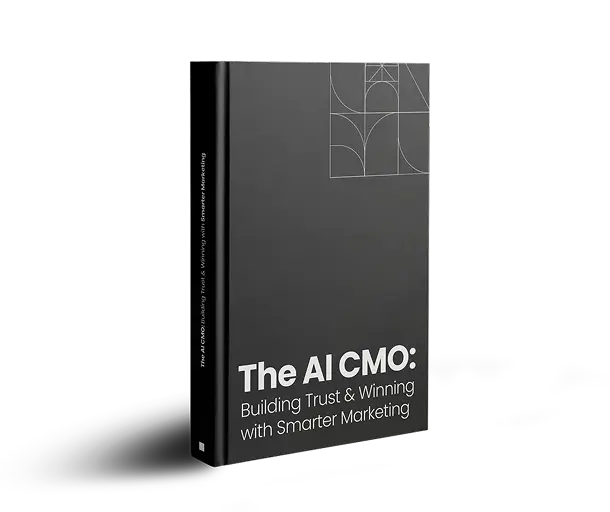
Introduction
Demand generation is the process of generating awareness of and demand for a business’s products or services.
It’s all about marketing and reaching out to the target audience, telling stories that capture their attention, and turning prospects into customers in an organized, gradual, and holistic manner.
Creating demand isn’t only about being everywhere and reaching out without a plan in place. To be more precise, demand generation aims to generate interest surrounding a particular product or service.
A few demand generation statistics every marketer should know.
– Only 56% of B2B organizations verify leads before they’re passed to sales (Marketing Sherpa).
– B2B marketing teams often spend upwards of 40 hours a month formatting and processing leads for database upload. (Integrate, The Cost of a Bad Lead).
– 54%of B2B marketers measure success via revenue-based quotas, while 45% measure success through lead-based quotas (NetLine).
– 64% of B2B marketers generate leads via LinkedIn, 49% via Facebook, and 36% via Twitter (Pinpoint Market Research).
In this article, we’ve got together 14 Top Marketing Experts from across the globe who share their views and insights on “Demand Generation strategies to grow B2B Businesses”
Here’s Our Expert Panel
- Jon Miller
- Salvatore J Tringali
- Ken McDonald
- Courtney Kehl
- Jon Miller
- Matt Janaway
- Mark Lennon
- Mark Hunter
- Jon Miller
- Matt Janaway
- Mark Lennon
- Mark Hunter
#1 Laura Maiurano

I recently published a blog post on the 7 steps to successful demand generation. While I believe all 7 are equally important, I want to highlight step 2 – defining your audience.
Defining your target audience(s) is the most critical part of successful demand generation planning. Doing a deep dive into your audience will give you the opportunity to speak directly to their needs and how you can help them solve their biggest challenges. For more details on how to define your target audience, check out this article from Neil Patel.
Once you’ve identified your target audience, group them into decision-makers and influencers. The idea is that you can go after both groups and they will, at some point, meet in the middle.
What’s critical to this part of the exercise is really understanding what will engage your audience and where they spend most of their time. This will enable you to shape your campaign tactics and messaging.
You can check out the entire blog post here: 7 Steps to Successful Demand Generation for Startups
Author Bio
My passion is helping early-stage startups build a foundation for their marketing programs. Building a solid marketing foundation early on is a critical step to growing programs over time. I have spent close to 10 years working at and for more than a dozen startups, each company with different goals. You can connect with her on LinkedIn.
#2 Adam Hutchinson

Too many marketers ignore the middle of the funnel. They spend valuable budget and time generating leads, but little attention is paid to connecting top-of-funnel campaigns with high-intent conversions. The best lead nurturing programs are short, specific, and responsive. In practice, this means knowing your customer profiles, so you can create effective segmentation. It means crafting UNGATED content for the middle-of-the-funnel, such as how-to articles, case studies, and other use case-oriented content. And finally, it means leveraging direct response channels such as email, direct mail, social media, and retargeting ads to “kick up the dust” and create meaningful interactions with your middle-funnel leads, giving you a reason to continue nurturing with more relevancy and your sales team a reason to reach out with helpful information. Instead of forcing your leads through a 12-week email program, focus on 3-5 step cadences around specific topics for each persona, generate interest among some, and move the rest into a new topic.
Author Bio
Adam Hutchinson is the Director of Marketing at Pacvue, the enterprise platform for eCommerce sales, advertising, and intelligence. Adam has led marketing teams at several B2B ad techs and mar-tech companies, and he previously ran holiday marketing programs at Amazon. He’s on a mission to enable the right journey for every buyer, through the power of data-driven storytelling. You can connect with him on LinkedIn.
#3 Lauren Fox

Be the best resource that you possibly can be for your audience. You’re there to help them achieve real results — and your expertise is what will help get them there. Give them all your best ideas and guidance (AKA great content) and, while they may not immediately become paying customers, they will remember how helpful you’ve been to their bottom line in the past, and they’ll reach out when they need you for bigger projects.
Author Bio
Lauren Fox is the Director of Marketing at Brafton. When she’s not busy annoying the heck out of her one-eyed tuxedo cat Jack, she’s either exploring one of the many hiking trails in the Pacific Northwest or cooking up a tasty meal in her tiny kitchen in Seattle.
#4 Mandy McEwen

B2B demand generation is evolving for the better. Brands now need to decrease their reliance on impersonalized automated outreach efforts and instead focus on meaningful relationship building, via personalized messaging. LinkedIn is the best place to start meaningful relationships with targeted prospects. Engage, provide value and send personalized messages. Start helping. Stop selling. Teams need to focus on being the first to provide value and insights. Technology is great, but only when you can add a personalized element. B2B buyers expect more in 2022. More personalization, more valuable content, more self-guided demos, more freedom, more interaction.
Author Bio
Mandy McEwen is the Founder & CEO of Mod Girl Marketing, an award-winning digital agency. As a renowned content creator, speaker, and mentor, Mandy has been named a Top 24 B2B Marketer by LinkedIn and a Top 20 Female Marketer by G2. Mandy and her world-class team increase brand exposure, social selling revenue, and thought leadership for B2B enterprises via LinkedIn and modern demand generation strategies. You can Connect With her on LinkedIn.
#5 John A. Larsen

In the B2B landscape remaining relevant is a challenge, especially in the advent of all things digital.
The line keeps moving in terms of what’s needed to generate more demand for what a company offers.
For 2022 there are 7 core strategies that must be implemented in tandem.
1. Reputation – building, promoting, and defending a 5-star reputation online.
2. Social – leveraging social media to enhance brand while demonstrating a human side and clearly helping your target audience understand why they should work with you.
3. Content – including articles, custom graphics, video, press releases all designed to elevate the brand and create more touchpoints for the brand across multiple channels.
4. Traffic – both paid and organic methods including retargeting to help fill in the gaps and maximize market reach.
5. Sales & Marketing Automation – campaigns targeting clients and prospects with cross-selling and up-sell opportunities.
6. Sales Funnel – establishing a web presence that leverages pattern interrupts, NLP, social proof, and more to turn visitors into opportunities.
7. Nurturing/Closing – leveraging automated text, Email, and Phone sequences to connect with opportunities faster, doubling potential results with correct strategies.
By building marketing and sales funnels around these 7 core strategies, a company begins to generate synergy between all elements helping to accelerate and lift demand for a company’s products, services, and solutions.
Author Bio
John is the Chief Marketing & Digital Officer for lift demand and has worked 28+ years as a sales and marketing leader in b-to-b and b-to-c disciplines for professional services including banking, accounting, insurance, investments, real estate, and mortgage. He is actively involved in R&D to find and deploy tactics, strategies, & tech to help clients generate more opportunities faster. You can connect with him on LinkedIn.
#6 Sheena Rijwani

Demand generation is a marketing powerhouse that helps in brand awareness. It is all about creating a predictable sales pipeline.
I have a very recent incident which I would like to share here. A few days ago, I was browsing my LinkedIn feed, and suddenly an exciting video caught my attention by an email software company. At the end of the video there, was a free research report. I downloaded the report and requested a couple of more pieces of content. After a few weeks around the same topic, they also invited me to an educational webinar. I was also intrigued by their free trial, but the point here is that you see where this is going?
I may not purchase their software today. But, next time I buy email software, they’ll be top of mind.
That’s what demand generation is all about – It is the process of creating awareness and demand for your products or services. It expands your audience, generates buzz, and drives traffic to transform interest into action.
Here are some of the demand generation strategies that can help create a predictable sales pipeline.
Content Marketing
Social Campaigns
Videos
Lead Magnets
Contact Segmentation
Referrals and Testimonials
Live events (and virtual ones, too)
Account-Based Marketing
Author Bio
My name is Sheena Rijwani, co-founder of SeeResponse. I’m a marketing consultant with over ten years of B2B experience in the technology space. In my free time, I love to cook and enjoy traveling the world like a local. You can connect with her on LinkedIn.
#7 Matt Bertram

Quote 1:
“Never lose sight of the basics when it comes to demand gen. Great technology is a must, but even the best machine learning algorithms, won’t help your company if you’re not building a valuable and informative profile of your target customers. And, even the most valuable lead profiles won’t matter if you can’t build a personalized demand gen experience that creates the right impression.”
Quote 2:
“Solve real problems. Demand gen takes time to mature, and it really starts to pay off when you can demonstrate how it directly impacts your customers’ businesses. If demand gen is viewed as a nice-to-have or a shiny object, you will struggle to gain buy-in. But, when it is taken seriously, proves its value, and then taken to the next level, you’ll see your company’s entire culture shift as it starts to matter more and more.”
Author Bio
Matt Bertram is Head of Digital Strategy @ EWR Digital. He is also the Co-Host of the top-rated SEO Podcast, “The Unknown Secrets of Internet Marketing.” and author of Amazon’s best-seller, “Build your Brand Mania”. You can connect with him on LinkedIn.
#8 Jon Mullett

The best strategy to grow B2B is connecting and optimizing all of the main areas of marketing – Website, SEO, Online Ads (targeted), email, media, and social. If you’re a startup or small business you may not have the resources to do a full marketing mix.
If I had to pick one, I’d focus on targeted and personalized email campaigns. Preferably an automated pipeline of emails and messages organized by each customer segment (job title, industry type, location, etc.). Email campaigns or your email SaaS should be synced with your CRM to add prospects and update communications seamlessly.
Again, the more segmented and personalized the email messages are the better the results. Make your messages simple and include a Call to Action (CTA) that speaks to your audience or is a competitive advantage.
I use lead intelligence platforms to create targeted lists for email prospecting. Lead intelligence databases contain information such as name, company, job title, location, email, and phone number.
Lastly, take a look at the performance metrics (clicks, opens, bounces, etc.) and make adjustments to test various email titles and messages. See what works and continue to grow your list and the messages you send.
Author Bio
Jon Mullett is a freelance marketer and marketing consultant with Mullett Marketing (www.mullettmarketing.com) He has over 20 years of marketing experience in marketing primarily with small, mid, startup, and growth-stage companies. His marketing background is diverse and includes website design, keyword optimization, SEO, email marketing, Google Ads (PPC), social media and social media ads, blogging, content, and performance metrics. Jon and his agency are located in fort Collins, Colorado. (970) 592-7889 | info@mullettmarketing.com | www.mullettmarketing.com You can connect with him on LinkedIn.
#9 Amanda McGuckin Hager

Often, I recommend to companies to focus on two key objectives before building a demand generation engine: (1) grow awareness of your company/product. Your customer literally can not purchase your product until they know you exist. Let them know you exist. (2) Grow your database. First-party data is critical to your success.
Once these are addressed, start to build your demand generation engine. Pick your main CTA, and ensure it’s on everything – your PR boilerplate, your social media profiles, your website, your emails, etc. Then build your communications plan; ensure a regular – and coordinated – drumbeat across all channels. Look at your press release schedule. Even if you are not putting it on a wire service; be sure to put it on your website to show momentum. Look into technology that can assist you – like automated outbound follow-ups, website chatbots, prospecting tools, and more. Finally, look at events and vendor programs to fill up your calendar.
Author Bio
Amanda’s experience and proven expertise serve B2B technology companies seeking to grow revenue, market share, and/or company valuation. By suggesting and sharing strategies, processes, best practices, and tactics, Amanda grows company awareness and drives demand for the product, in order to serve the sales goals. You can connect with her on LinkedIn.
#10 Laine Belcastro

Build out as much educational content as you can to show your target audiences how your business can help solve their existing or unforeseen challenges. Come across as a thought leader and build relationships with your potential prospects versus trying to pitch your product.
Author Bio
Pardot Certified Specialist and Consultant & Partner, Mailchimp Partner, a digital marketer with the drive and motivation to increase results and revenue. You can connect with her on LinkedIn.
#11 Maria Ross

To grow your B2B business, you need to remember that you are selling to HUMAN BEINGS. It doesn’t matter that they are not paying out of their own personal pocket. The buying decision still says something about them and helps them achieve a goal. We as humans make purchase decisions based on emotion and often justify them with logic. What is the emotional side of your story? What does your product or service enable your customers to be, to do, or become? Clarify and communicate your mission, vision, and values – and live them out – to attract and then you can convert them with your superior features and functions.
Author Bio
Maria Ross, is a speaker, author, and founder of brand consultancy Red Slice, believes cash flow, creativity and compassion are not mutually exclusive. She advises entrepreneurs and fast-growth businesses on building irresistible brand stories and messaging to better connect with customers and stand out. You can connect with her on LinkedIn.
#12 Michael McGoldrick

Today, buyers transcend your marketing channels from moment to moment. They have no idea that separate teams run your display advertising, website content, email campaigns, or sales development outreach, and frankly, they don’t care. They’re behaving increasingly like consumers every day, showing a strong preference for frictionless digital engagement experiences, and expecting every experience with your organization to feel like a natural extension of their earlier experiences. Beyond siloed capabilities, the enterprise demand gen marketer needs more advanced control that prevents them from over-marketing or sending conflicting messages between marketing teams. In addition to these controls, B2B leaders need smarter activation to develop account-based engagement strategies that they can execute across existing organizational boundaries without totally disrupting those boundaries. By connecting the expertise and capabilities of the enterprise’s diverse workforce, a multitenant ABM platform that permits role-based collaboration can enable this pivot — at scale. Marketing’s ongoing role should be to steward cross-functional relationships across departmental silos while creating a shared view and understanding of their customer.
Author Bio
In his role as Head of Marketing EMEA/APAC, Michael leads the marketing initiatives in the EMEA & APJC territories, with an emphasis on positioning MRP Prelytix as the only enterprise-class, account-based sales, and marketing platform. Amassing nearly a decade of experience as a B2B marketer across a wide range of industries, Michael has held senior marketing positions at some of the world’s largest Business Process Outsourcing (BPO) organizations. You can connect with him on LinkedIn.
#13 Jim Rembach

Steal a concept from Warren Buffett, the American business magnate, investor, and philanthropist, by building a Trust Moat to grow demand for your business. Buffet’s Economic Moat is about having a distinct advantage over your competitors, which allows you to protect your market share and profitability. By analyzing your ideal customer profiles properly and implementing the same framework in demand generation, you too can increase your market share and profitability.
Author Bio
Jim Rembach collects and shares insights from some of the greatest minds in B2B sales and marketing as a facilitator of executive-level roundtables and podcast host of the B2B Digital Marketer podcast. You can connect with him on LinkedIn.
Our blog
Latest blog posts
Tool and strategies modern teams need to help their companies grow.

Discover six hybrid B2B marketing event formats that drive real pipeline growth, enha...

Struggling to convert your SQLs? Learn the common mistake B2B companies make and opti...

Turn your owned channels into a precision account-based marketing (ABM) engine that w...






